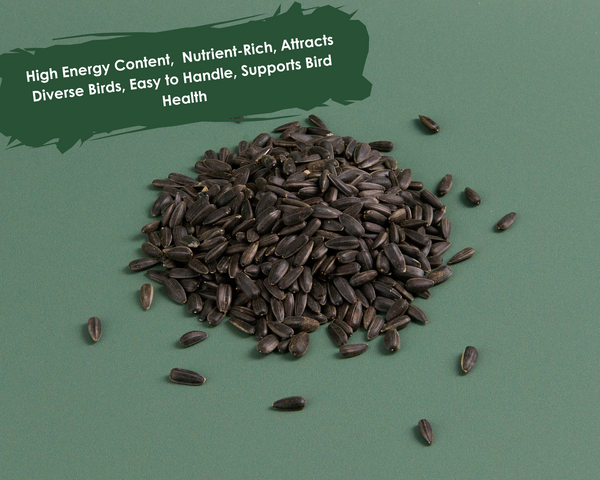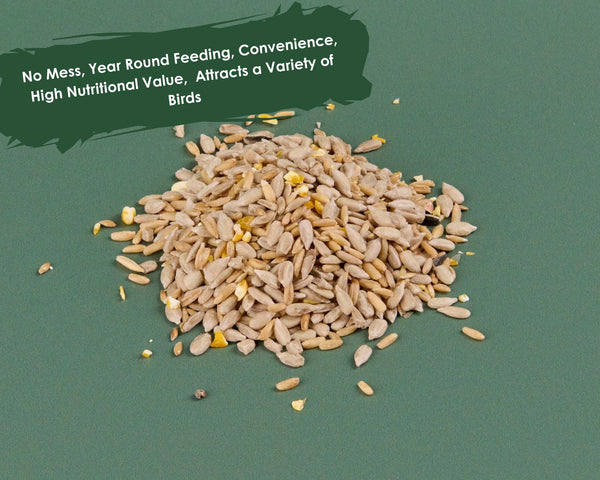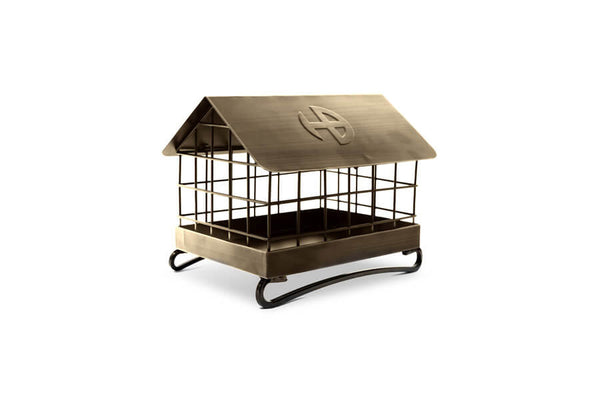All About Turtle Doves - Turtle Dove Bird Facts & Information
About Turtle Doves

The Turtle Dove's purr vocalisation is one of the most recognisable sounds of the spring and summer - these dainty birds are much smaller than the Collared Dove, and have a mottled chestnut and black top body with a black tail with white edges.
Since 1996, the Turtle Dove species has been rapidly declining and has been on the red list on the UK conservation list due to a whole range of reasons include habitat loss and food being scarce.
These birds see a lot of love from the wildlife community with projects happening all over to help them - including the RSPB led project called 'operation Turtle Dove' which worked with communities and farm owners around Southern and Eastern England to try and create suitable nesting environments for this threatened species.
Do Turtle Doves migrate?
Yes, as soon as the day's get shorter, the Turtle Dove migrates from its breeding ground to the warmer climate of West Africa. They are known for their long-distance migrations between breeding and wintering grounds.
In Africa, they will gather in roosts of up to a million birds.
Where Do Turtle Doves Get Their Names From?
The name "Turtle Dove" likely originates from the distinctive sound of their call, which has been described as a soft, purring cooing sound reminiscent of a turtle's vocalisations.
The word "turtle" in this context is believed to be derived from an old English word, "turtle," which means "to murmur" or "to make a low, vibrant sound."
This name reflects the characteristic cooing sound that Turtle Doves make, especially during the breeding season when they are known for their courtship displays and vocalisations.
Where do Turtle Doves live?
In the UK, the Turtle Dove is found in England and Wales, with fewer numbers in Scotland and very rare sightings in Northern Ireland. In these areas, they inhabit a variety of habitats including woodlands, hedgerows and farmland. During the breeding season, they often nest in areas with dense vegetation, such as woodland edges, thick hedgerows, and shrubby patches in farmland.
Known for their association with agricultural landscapes where they feed on seeds and grains these birds have adapted to a range of locations.
In the UK, the population of these birds has been declining and this is due to habitat loss, changes in agricultural practices and other factors that may affect breeding attempts and nesting attempts. Turtle Doves are now considered a priority species for conservation efforts in the UK.
Where to see turtle doves UK?
In the UK, seeing Turtle Doves can be tricky as their population is so limited across the country - however, there are still some places they can be observed, especially during breeding and migration periods.
Nature Reserves
Visit nature reserves managed by conservation organisations such as the Royal Society for the Protection of Birds (RSPB) or the Wildlife Trusts. These local reserves often provide suitable habitats for Turtle Doves and may have specific conservation projects aimed at supporting their populations.
Farmland with Hedgerows
Turtle Doves are often associated with farmland, especially areas with hedgerows, scrub land, and mixed farming practices. Look for farmland with diverse vegetation and agricultural fields where they may forage for seeds and grains.
Woodland Edges
Turtle Doves may also be found in woodlands and woodland edges, particularly during the breeding season when they seek suitable nesting sites. Look for areas with dense vegetation and patches of scrub where they can nest and forage.
Migration Routes
During their migration periods, Turtle Doves may pass through certain areas en route to their wintering grounds in Africa. Bird watching sites along migration routes or coastal areas may offer opportunities to spot migrating Turtle Doves.
How long do Turtle Doves live?
In the wild, Turtle Doves live around 2 to 3 years, with some individuals living a bit longer. Encountering predators, habitat loss and lack of food resources can also all influence the life of these birds.
In captivity, Turtle Doves may live longer, with some individuals reaching 10 years of age or more under optimal conditions with proper care and nutrition.
Turtle Dove Breeding Season
Breeding season typically begins in the spring when these birds head back to their breeding grounds. In the United Kingdom, the breeding season for Turtle Doves typically spans from April to August, with peak activity occurring from May to July.
The male Turtle Dove will engage in impressive displays to attract females including puffing out his chest, cooing softly and bowing to the female. Once a pair has formed, they will build a flimsy nest together, usually in a tree, dense shrub, or hedgerow. The nest is a simple structure made of twigs, grasses, and other plant materials.
The female typically lays 2 eggs, which are incubated by both parents for around 14 to 18 days. After hatching, the parents take turns feeding and caring for the chicks until they fledge, which usually occurs around 16 to 20 days after hatching.

Do Turtle Doves Mate for Life?
Yes, Turtle Dove's are monogamous and pair for life.
What do Turtle Doves Eat?

Turtle doves, also known as European Turtle Doves, primarily feed on seeds, grains, and occasionally small insects.
Their diet consists mainly of weed seeds, cereal grains, and other small seeds found on the ground. They may also eat fruits such as berries when available.
In captivity, turtle doves are often provided with a mix of seeds such as millet, canary seed, and small grains. It's important to ensure they have access to fresh water as well.
Turtle Doves Predators
Turtle doves, scientifically known as Streptopelia turtur, are preyed on by birds of prey. Raptors such as falcons, hawks, and owls are adept hunters with keen eyesight and sharp talons, making them formidable threats to these small doves. They hunt turtle doves both in flight and on the ground, preying on them as they forage for seeds, grains, and small insects.
Mammalian predators also pose a significant threat to turtle doves. Creatures like foxes, weasels, and feral cats are skilled hunters capable of ambushing these birds while they are roosting or nesting. These predators can decimate local populations if left unchecked, especially in areas where the natural balance has been disrupted by human activity.
Additionally, human activities indirectly contribute to the decline of turtle dove populations. Habitat destruction, pesticide use, and climate change all play roles in diminishing the availability of suitable nesting sites and food sources for these birds. As their habitat shrinks and food becomes scarce, Turtle Doves become more vulnerable to predation and other threats, further endangering their survival.
How to Attract Turtle Doves into Your Garden
In our gardens, there are some important things we can do to create a habitat that is suitable for Turtle Doves.
Firstly, establish a feeding station. Turtle Doves are ground feeders, so it is best to use a ground feeder or to scatter the seed mix thinly on the ground. For Turtle Doves, look for a seed mix that contains seeds such as white millet and sunflower hearts. When feeding these birds, make sure to keep the feeding stations clean to avoid spreading disease.
To help these birds survive, water is essential. Provide a clean water source that these birds can bathe in and drink from. This could be a water feature, a bird bath or a shallow dish.
Five Facts about Turtle Doves
-
Turtle Doves, also known as lovebirds, are symbolic in various cultures and traditions as a representation of love, fidelity, and devotion. This symbolism is often tied to their perceived monogamous nature and the tender cooing sounds they make.
-
Turtle Doves are migratory birds found across Europe, Asia, and Africa. They typically breed in the warmer months, building their nests in trees or shrubs. Mated pairs often exhibit strong bonds, engaging in courtship rituals such as mutual preening and synchronised flights.
-
Despite their cultural significance and widespread distribution, Turtle Dove populations have been declining rapidly in recent decades. Habitat loss, agricultural intensification, and hunting are among the primary factors contributing to their decline. Conservation efforts are underway to address these threats and reverse the trend.
-
Turtle Doves are primarily seed-eaters, with a preference for small grains such as wheat, barley, and millet. During the breeding season, they may also consume insects to supplement their diet and provide essential nutrients for their young.
-
The European Turtle Dove (Streptopelia turtur) is listed as "Vulnerable" on the IUCN Red List of Threatened Species due to significant population declines. Conservation initiatives focus on habitat restoration, sustainable agriculture practices, and raising awareness about the plight of these birds to mitigate further population loss.
-










